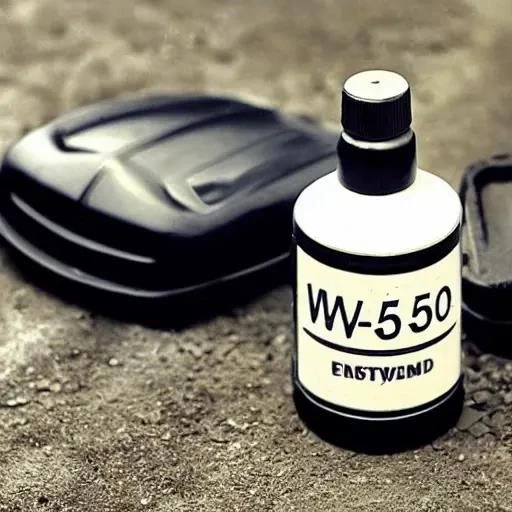
In the ever-evolving landscape of automotive technology, where efficiency and innovation often dominate the conversation, certain classic solutions sometimes fade into the background, only to re-emerge with compelling relevance. One such stalwart, often overlooked in the modern era of ultra-thin lubricants, is the venerable 20W-50 engine oil for car. Far from being an anachronism, this robust formulation is experiencing a remarkable resurgence, proving itself an incredibly effective and vital component for a surprising number of vehicles on our roads today, particularly as engines age and operational demands intensify.
For decades, 20W-50 was the undisputed champion for many engines, offering a thick, protective film that guarded against wear and tear under demanding conditions. Its “W” rating signifies its winter viscosity at cold temperatures, while the “50” denotes its higher viscosity at operating temperatures, providing a substantial barrier against metal-on-metal contact. While newer, thinner oils have been engineered for modern, tighter-tolerance engines to maximize fuel economy, the unique properties of 20W-50 remain indispensable for a significant segment of the automotive fleet, from cherished classics to workhorse vehicles navigating scorching climates or carrying heavy loads. Understanding its enduring value is crucial for any car owner committed to optimizing their vehicle’s longevity and performance.
Understanding 20W-50 Engine Oil: Key Information
| Category | Description/Details |
|---|---|
| Viscosity Rating | Multi-grade oil; “20W” indicates its flow at low temperatures (better cold start than straight 50W), while “50” represents its higher viscosity at engine operating temperatures (100°C). This offers robust protection under heat and stress. |
| Ideal Applications |
|
| Key Benefits | Superior engine protection by maintaining a thicker oil film, reduced oil consumption in worn engines, excellent thermal stability preventing breakdown at high temperatures, lower oil pressure drop under extreme conditions, and effective sealing of engine components. |
| Modern Formulations | Contemporary 20W-50 oils often incorporate advanced additive packages, including detergents, dispersants, anti-wear agents, and antioxidants, enhancing their protective qualities beyond traditional formulations. Many are also available as synthetic blends, offering even greater performance. |
| Reference Standard | American Petroleum Institute (API) Engine Oil Standards |
The automotive world is constantly pushing boundaries, yet some fundamental principles remain unshaken. For many older vehicles, particularly those manufactured before the widespread adoption of extremely tight engine tolerances, a thicker oil like 20W-50 is not just an option, but a necessity. As engines accumulate mileage, internal clearances naturally widen. A lower viscosity oil might struggle to maintain an adequate protective film, leading to increased wear, diminished oil pressure, and even elevated oil consumption. Conversely, a robust 20W-50 formulation effectively fills these larger gaps, restoring optimal lubrication and significantly extending the engine’s operational life. Industry experts, like Dr. Elena Petrova, a lead tribologist at Global Lubricant Innovations, frequently highlight this critical aspect: “For an engine with over 100,000 miles, especially in a hot climate, switching to a higher viscosity oil like 20W-50 can be one of the most proactive maintenance decisions an owner can make. It’s about matching the lubricant to the engine’s current mechanical reality, not just its factory specifications.”
Furthermore, the advancements in lubricant technology haven’t bypassed 20W-50. Today’s formulations are far more sophisticated than their predecessors, boasting advanced additive packages that enhance thermal stability, reduce sludge formation, and provide superior anti-wear properties. By integrating insights from cutting-edge material science, these modern oils deliver unparalleled protection, even under the most punishing conditions. Consider the example of classic car enthusiasts: preserving these automotive treasures often involves rigorous demands, from spirited driving to long periods of storage. A high-quality 20W-50 provides the peace of mind that comes with knowing the engine is meticulously protected, preventing premature aging and costly repairs. Its ability to maintain a stable oil film across a broad temperature range makes it indispensable for these revered machines, safeguarding their intricate components with unwavering dedication.
Looking ahead, the role of 20W-50 engine oil is set to remain significant, particularly as global temperatures continue to rise and the average age of vehicles on the road steadily increases. It offers a practical, powerful solution for maintaining peak engine health and extending the lifespan of countless cars worldwide. Rather than viewing it as a relic, we should embrace 20W-50 as a testament to enduring engineering principles, continually refined for contemporary challenges. Its unwavering performance in safeguarding vital engine components—from pistons to camshafts—underscores its critical importance. For car owners seeking to maximize their vehicle’s resilience and ensure robust performance for years to come, rediscovering the protective prowess of 20W-50 engine oil is not merely a choice; it’s a remarkably intelligent investment in their automotive future.
